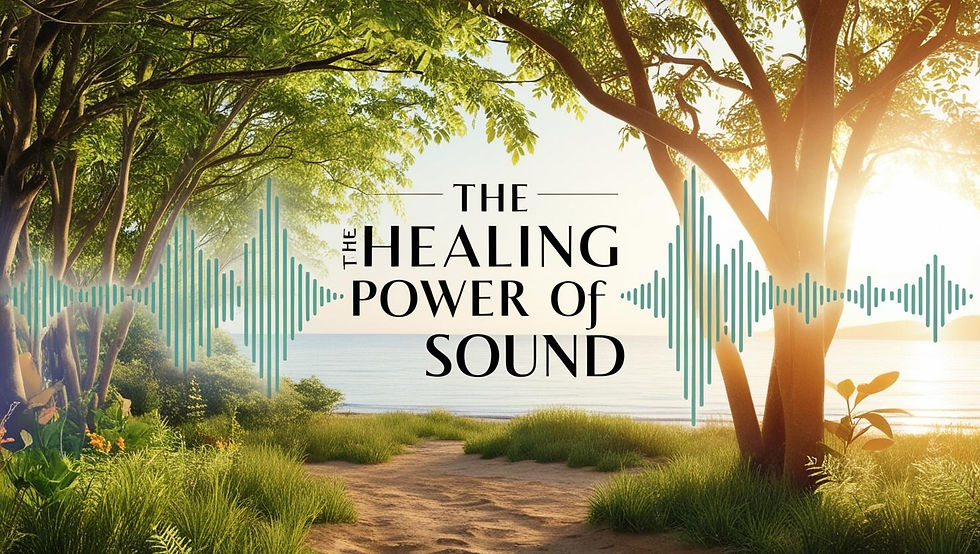The Healing Power of Sound: How It Affects the Body Through Entrainment and Sympathetic Resonance
- Camilla Hamblin

- Apr 19
- 2 min read
In a world where everything is energy and vibration, it’s no surprise that sound has a profound effect on the human body. Whether it’s the calming rhythm of ocean waves, the pulse of a drumbeat, or the hum of a singing bowl, sound moves through us—literally—and can shift our internal state in powerful ways.
Two key concepts help us understand why sound is such a potent healing tool: entrainment and sympathetic resonance.
What Is Entrainment?
Entrainment is a natural phenomenon where rhythmic patterns synchronize over time. In the context of sound healing, it refers to how our brainwaves, heart rate, and even breath begin to align with external rhythms.
For example, when you listen to a steady beat—like a drum or chime—your nervous system starts to slow down, syncing up with the rhythm. If that rhythm is calm and grounding, your body begins to mirror that calmness. It's a bit like when people start walking in step without trying or when your heartbeat syncs up with the music during a sound bath.
This is why sound healing is so effective in supporting relaxation, regulating the nervous system, and even shifting emotional states. The body instinctively finds coherence in response to consistent, soothing vibration.
The Magic of Sympathetic Resonance
Sympathetic resonance takes entrainment one step further. It’s the principle that when one object vibrates, it can cause another object to vibrate at the same frequency—if they're naturally attuned. Think of how one tuning fork can make another one vibrate just by being near it.
In your body, every organ, bone, and cell has its own frequency. When exposed to harmonious, resonant sound—like a crystal bowl, gong, or voice in toning—it can “wake up” these natural frequencies, encouraging the body to return to its own natural harmony.
This is especially helpful when we’re out of alignment—physically, emotionally, or energetically. Sympathetic resonance supports the body in recalibrating and returning to balance, like a musical instrument being gently retuned.
Why This Matters for Healing
We live in a world that constantly bombards us with noise and overstimulation. Our nervous systems are often on high alert, and our inner rhythm can easily become chaotic or disconnected.
Sound therapy invites the body back into coherence. It helps down-regulate the stress response, encourages presence, and activates the parasympathetic nervous system (our rest-and-digest mode).
But perhaps more than that, sound speaks a language beyond the mind. It bypasses logic and touches the emotional and energetic layers of who we are, making it one of the most direct and ancient paths to healing.
Final Thoughts
As we continue to explore healing modalities that work with the whole human—body, mind, heart, and spirit—sound is emerging as one of the most accessible and transformative tools available. Whether it’s through breath, voice, instruments, or immersive soundscapes, the power of vibration is profound.

Through entrainment and resonance, sound doesn’t just soothe us—it remembers us back into wholeness.
.jpg)



Comments